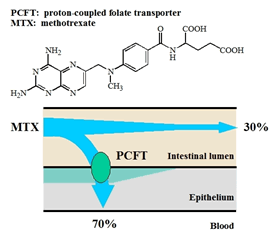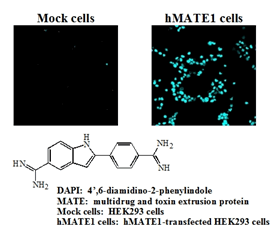Biopharmaceutics
Staffs
Hiroaki Yuasa, Ph.D., Professor
Tomoya Yasujima, Ph.D., Associate Professor
Takahiro Yamashiro, Ph.D., Assistant Professor
Tomoya Yasujima, Ph.D., Associate Professor
Takahiro Yamashiro, Ph.D., Assistant Professor
Research Project
- Functions and Regulation Mechanisms of Transporters Involved in Drug Disposition
- Roles of Transporters in Drug Disposition
- Physiological and Pathophysiological Roles of Transporters
- Methodologies of Evaluation and Prediction of Drug Disposition
The processes of drug disposition in the body (absorption, distribution, metabolism and excretion) are important as factors that determine drug concentration at the site of action and, thereby, affect therapeutic effects and also adverse effects. We have been particularly interested in transporters (membrane proteins for solute transport) involved in the processes of absorption, distribution and excretion of drugs and studying their functions and roles in drug disposition. Accumulating information about transporters would help exploring possibilities that transporters might be utilized for drug delivery into the body and/or to specific organs. It would also help exploring strategies to, taking into account interindividual differences, adjust dosage regimens and optimize drug therapies.
Our research interests also include the physiological and pathophysiological roles of transporters as possible targets of drug development, and methodologies of evaluation and prediction of drug disposition for assisting in drug development and optimization of drug therapies.
Our research interests also include the physiological and pathophysiological roles of transporters as possible targets of drug development, and methodologies of evaluation and prediction of drug disposition for assisting in drug development and optimization of drug therapies.

(1) Intestinal drug absorption mediated by PCFT. MTX, an antifolate drug, is absorbed via PCFT, which is present in the intestine for the absorption of folate (vitamin B9). Although about 70% of its oral dose is absorbed from the intestine, it is not absorbed in the lower part, where PCFT is not present.

(2) Assay method for the evaluation of the functionality of human MATE1 (hMATE1). DAPI, a fluorescent dye used for nuclear staining, can be transported by hMATE1, a renal transporter for cationic drugs, into the cells and emit blue fluorescence (right), but this compound is practically impermeable through the plasma membrane of the cells without hMATE1 (left). Taking advantage of such characteristics, DAPI can be utilized for rapid assays of the functionality of hMATE1.
Contact Information
Department of Biopharmaceutics
Graduate School of Pharmaceutical Sciences, Nagoya City University
3-1 Tanabe-dori, Mizuho-ku, Nagoya 467-8603, Japan
E-MAIL: yuasa"at"phar.nagoya-cu.ac.jp
TEL/FAX: +81-52-836-3423
Graduate School of Pharmaceutical Sciences, Nagoya City University
3-1 Tanabe-dori, Mizuho-ku, Nagoya 467-8603, Japan
E-MAIL: yuasa"at"phar.nagoya-cu.ac.jp
TEL/FAX: +81-52-836-3423

